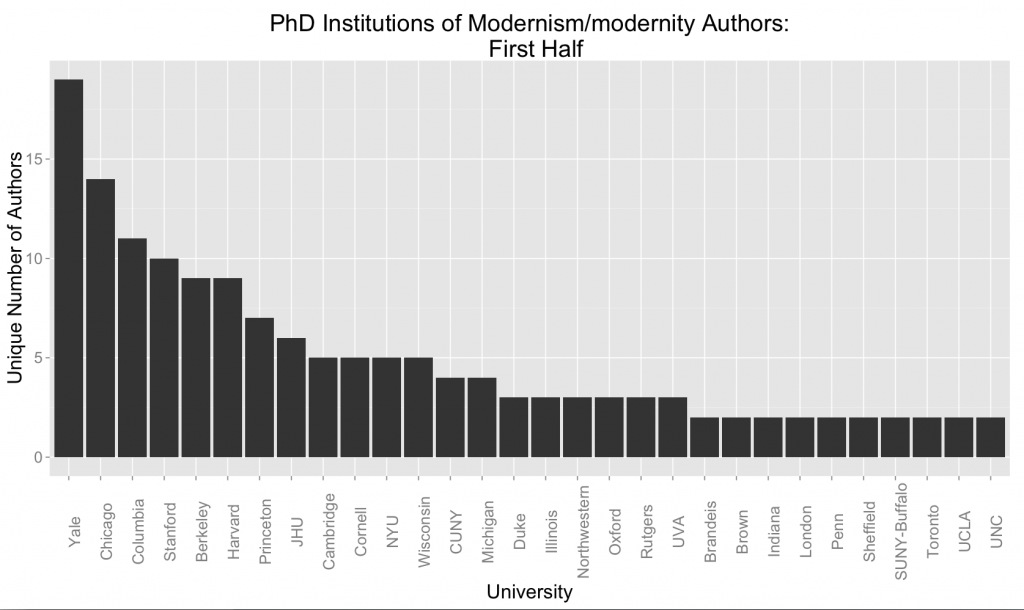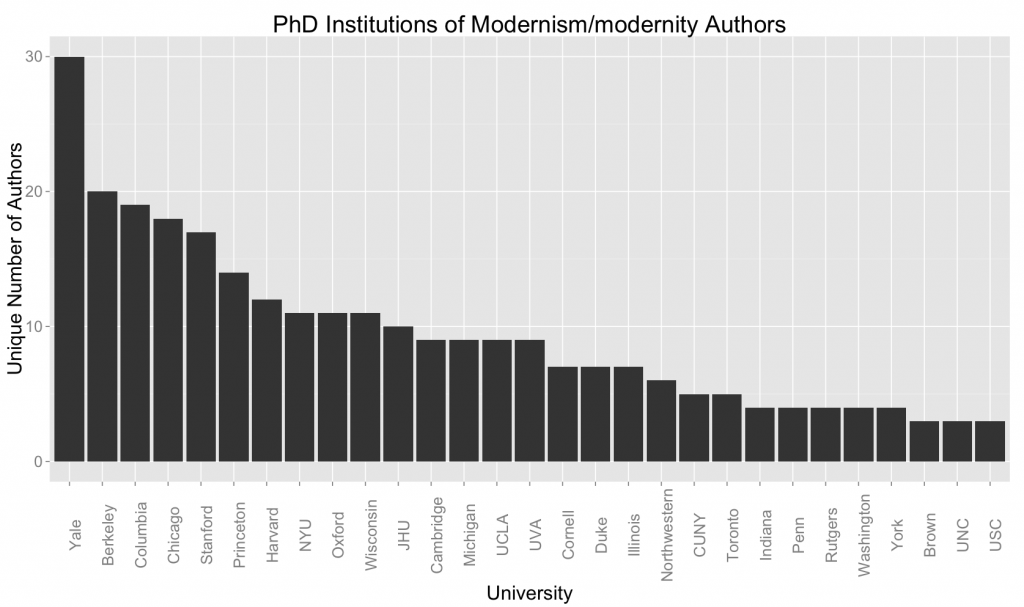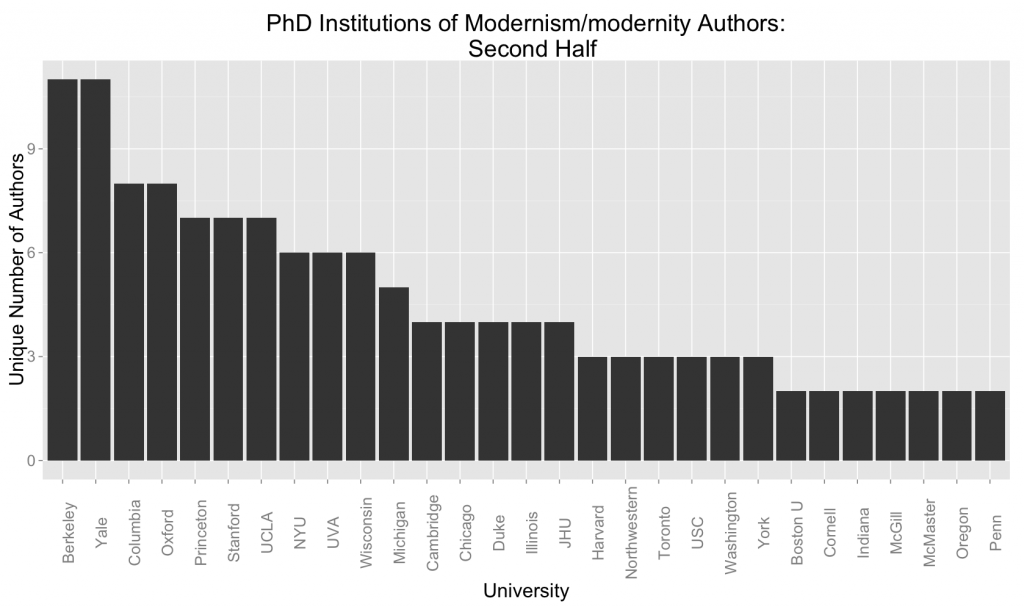The Distribution of PhDs in Modernism/modernity
Modernism/modernity is an important and relatively new journal (1994-) that publishes interdisciplinary work in modernist studies. Though I’ve never submitted an article to it (I did publish a book review there), I’ve long heard that it is very difficult to publish in. The last time I checked, the journal did not submit acceptance statistics to the MLA Directory of Periodicals (these statistics make for interesting reading if you’ve never looked at them, by the way).
I thought it would be interesting and sociologically revealing to chart the PhD institutions of the journal’s authors. I decided to check only those who had published research articles—not review-essays, shorter symposium pieces, questionnaires, or book reviews. There were 358 unique authors, along with twenty-two whose PhD institutions I could not track down. (These were mostly UK-based academics. Many UK departments do not list the PhD institution of their academics, while virtually all US ones do.) There were also approximately ten authors who had published more than one article there (six times was the record).
I had hoped that there would be a way to automate this tedious procedure, involving a web crawler and perhaps automatically querying the Proquest dissertation database; but it quickly became evident that any automation I was capable of devising would be error-ridden and require as much time to check as doing it all by hand. Out of resignation, stubbornness, and a deeply misplaced set of priorities, I checked them all by hand and graphed the results:
The above image displays all institutions with at least three authors. Those schools with two authors each were: Boston U, Brandeis, Essex, Exeter, London, Manchester, McGill, McMaster, Monash, Oregon, Sheffield, SUNY-Buffalo, Temple, Texas, Tufts, Uppsala, and WUSTL. There were 49 universities with one author each.
From a statistical perspective, I don’t think there’s anything too unusual about this distribution. It is more tightly clustered among elite institutions than I would have guessed beforehand, however. Clancy told me that this project seemed to be a public shaming, which is not my intention at all. I do think that a comparison with another literary journal that publishes in modernist studies would reveal a broader distribution, but I think that this might be as easily explainable by Modernism/modernity’s interdisciplinary focus as its elitism.
UPDATE (1/3/14):
I had a suggestion to divide the data chronologically. Here is the first
half (minimum=2):


